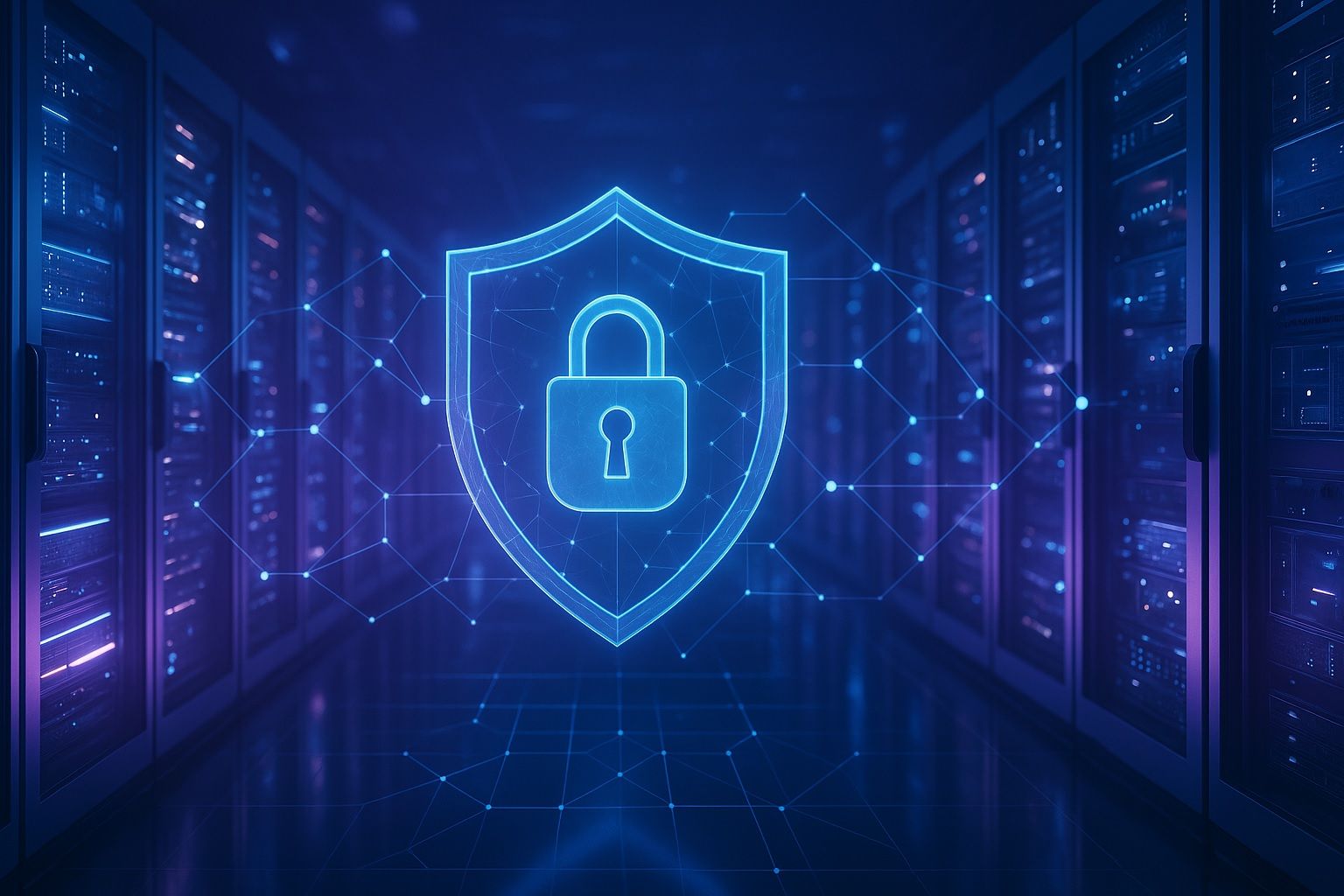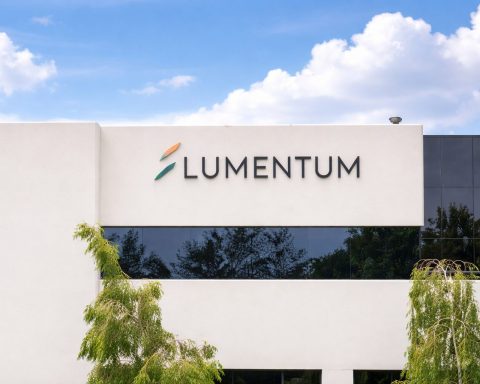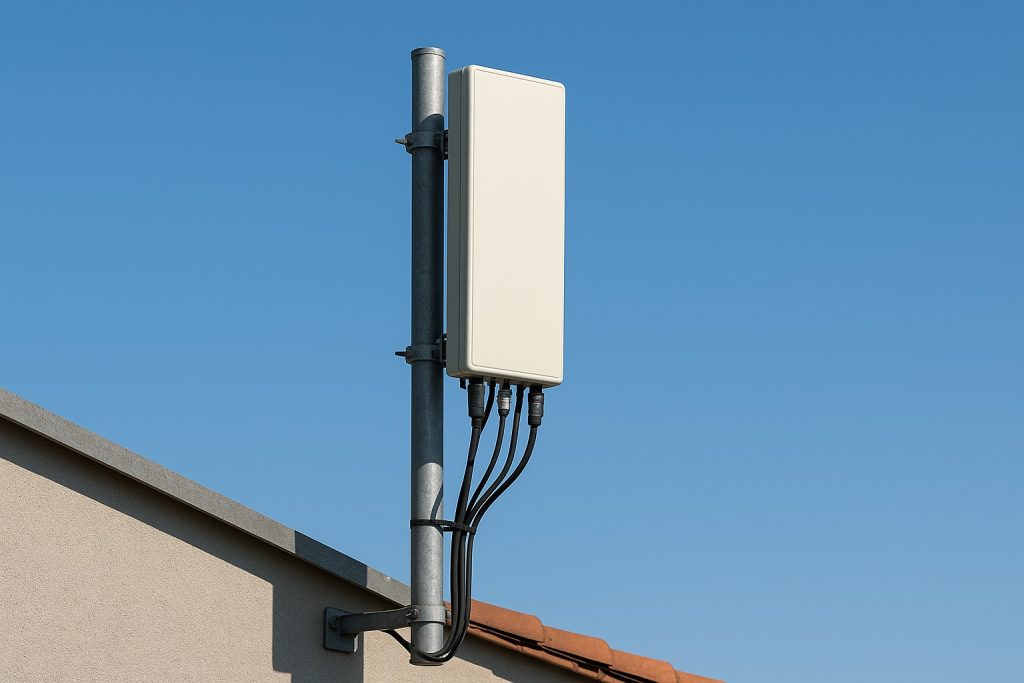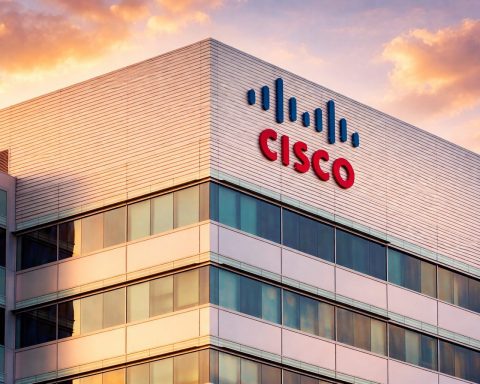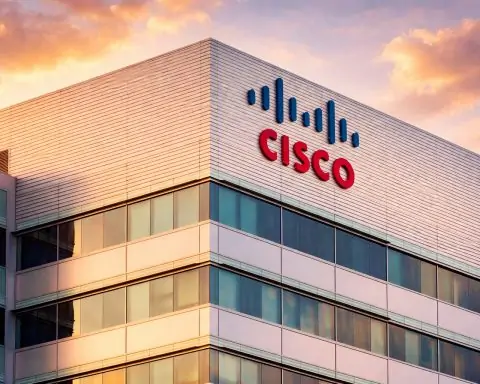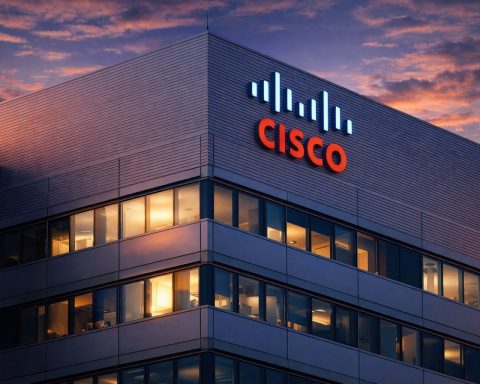- NIST published Special Publication 1800-35, “Implementing a Zero Trust Architecture,” in June 2025, offering 19 example ZTA implementations built with off-the-shelf commercial technologies.
- Gartner forecast that by the end of 2025, 60% of enterprises will embrace zero trust as a starting point for security.
- Illumio and NVIDIA announced an OT Zero Trust Segmentation partnership in June 2025 to run Illumio’s microsegmentation on NVIDIA BlueField DPUs for agentless enforcement in OT and data-center environments.
- Cisco at Cisco Live on June 10, 2025 unveiled Universal ZTNA and a Hybrid Mesh Firewall to extend identity-driven zero-trust policy across users, devices, and AI agents, with deeper Splunk analytics integration.
- Microsoft Build 2025 announced Entra Agent ID to give AI agents unique identities, enabling zero-trust authentication and authorization for AI processes, with Purview data security extended to AI systems.
- Leonardo (Italy) announced on July 1, 2025 that it acquired 24.55% of SSH Communications Security for €20 million to lead a European zero-trust revolution and gain exclusive rights to integrate SSH’s technologies.
- Nevada launched the Office of Information Security and Cyber Defense on July 1, 2025 to centralize state cybersecurity with 24/7 monitoring, threat hunting, incident response, and embedding zero-trust principles.
- U.S. Executive Order 14306 – Modernizing Federal Cybersecurity was issued in June 2025 to elevate proactive risk management and push zero-trust-oriented practices across federal agencies.
- A June 2024 ransomware attack on Synnovis, a London healthcare IT provider, was linked to a patient’s death due to delayed blood tests and incurred costs of over £32 million.
- Europol’s IOCTA 2025 report notes criminals are weaponizing stolen data and AI, with initial access brokers reselling breached credentials and AI-enabled social engineering and deepfake scams on the rise.
The early summer of 2025 has seen significant developments in cybersecurity, with a sharp focus on zero-trust architectures. Organizations worldwide grappled with major cyber incidents while governments and industry leaders advanced zero-trust strategies. From new security guidelines and vendor product launches to policy shifts and AI-driven security innovations, this period underscored that zero trust is moving from buzzword to baseline. Below is a comprehensive report of the key news, incidents, and trends shaping cybersecurity and zero trust in June and July 2025.
Cyber Threat Landscape: Major Incidents and Trends
Cyber adversaries were highly active in June 2025, exploiting targets across industries and geographies. Major cyber incidents included ransomware attacks, data breaches, and even life-threatening disruptions, underscoring the urgent need for resilient defenses. Key incidents and trends from this period include:
- Global Data Breach Wave: Multiple high-profile breaches hit diverse sectors. A massive leak of 16 billion credentials (compiled from infostealer malware over years) was dumped online, exposing billions of account passwords and fueling fears of credential-stuffing attacks [1] [2]. In India, car rental firm Zoomcar suffered an API breach exposing data of ~8.4 million users [3] [4], while Hawaiian Airlines endured a cyberattack that disrupted its backend operations [5]. Even public sector entities were impacted – a cyber incident crippled Glasgow City Council’s IT systems, raising data safety concerns [6]. These attacks exploited weaknesses in infrastructure, third-party vendors, and identity management, showing that no area was untouched [7].
- Ransomware’s Real-World Consequences: Ransomware attacks continued at a dangerous pace, with June witnessing a surge in activity. Notably, British health officials revealed that a June 2024 ransomware attack on a London healthcare IT provider directly contributed to a patient’s death, by delaying critical blood tests [8] [9]. The attack on Synnovis (attributed to the Qilin ransomware gang) disrupted multiple hospitals and racked up £32+ million in costs [10] [11]. This tragic confirmation – one of the first deaths tied to hacking – underscores how cyberattacks can pose life-and-death risks beyond mere data loss [12] [13]. Security experts warn that ransomware is now a direct threat to national security, especially when it hits critical infrastructure like healthcare, energy, or water systems [14] [15].
- Cybercrime Trends – Data Theft and AI Abuse: Attackers are leveraging stolen data and AI tools to amplify their operations. A Europol report (IOCTA 2025) highlighted that criminals are “feasting” on stolen data to power a range of attacks – from online fraud and extortion to child exploitation [16]. Initial Access Brokers are reselling breached credentials on the dark web, while threat actors increasingly use end-to-end encrypted apps to trade stolen information [17]. Alarmingly, cyber gangs are also weaponizing generative AI for more convincing social engineering and deepfake scams. Europol notes that criminals can now tailor scam messages “to victims’ cultural context and personal details with alarming precision” using AI [18]. Likewise, OpenAI reported in June how it detected and disrupted malicious use of ChatGPT by multiple threat actors [19] [20]. Cases included North Korean scammers auto-generating fake resumes and job scams, Chinese operatives mass-producing propaganda posts in English and Chinese, and Russian actors exploiting ChatGPT to help craft multi-stage malware (for credential theft and attack obfuscation) [21] [22]. These revelations show that AI is a double-edged sword – rapidly being adopted by both defenders and attackers.
Overall, the threat landscape in mid-2025 is marked by higher stakes and sophisticated tactics. Massive credential leaks and cross-industry breaches demonstrate broad exposure. Ransomware’s toll has become more than financial, prompting calls for stronger incident containment and zero-trust network segmentation to stop lateral attacker movement [23] [24]. Meanwhile, the abuse of AI by cybercriminals adds urgency for organizations to monitor AI-driven threats and implement controls for AI usage. The common theme is that traditional perimeter defenses are insufficient, and proactive, “assume breach” approaches are critical to mitigate these modern threats [25] [26].
Zero-Trust Architecture: New Guidance and Adoption
With cyber threats evolving, zero-trust architecture (ZTA) has emerged as a cornerstone strategy in 2025. Over this period, governments and standards bodies released important guidance to help organizations implement zero trust, and industry analysts noted a sharp rise in zero-trust adoption:
- NIST’s Practical Zero Trust Guide: In June, the U.S. National Institute of Standards and Technology (NIST) published a comprehensive guide titled “Implementing a Zero Trust Architecture” (Special Publication 1800-35) [27]. This newly finalized guidance offers 19 example ZTA implementations built with off-the-shelf commercial technologies [28] [29]. It’s meant as a hands-on companion to NIST’s foundational 2020 zero trust framework (SP 800-207), shifting from theory to practice. “This guidance gives you examples of how to deploy ZTAs and emphasizes the different technologies you need to implement them,” explained NIST computer scientist Alper Kerman, noting it can be a “foundational starting point” for any organization building its own zero trust architecture [30]. The guide, developed with 24 industry partners (including major vendors), walks through core steps for ZTA projects – from inventorying assets and defining least-privilege access policies, to integrating identity management, continuous monitoring, and incident response into the design [31] [32]. By detailing real-world architectures and best practices, NIST aims to demystify zero trust implementation and help enterprises move from perimeter-based security to a resilient, verification-everywhere model [33] [34].
- Zero Trust Goes Mainstream: Industry experts report that zero trust has moved from niche concept to mainstream security priority in 2025. A growing consensus holds that traditional perimeter defenses are obsolete in a world of cloud services, remote work, and BYOD devices [35] [36]. In data center security, for example, the zero trust model is now seen as “the number one trend” for enterprises, according to OryxAlign’s Stuart Miller. “60% of businesses anticipate a cyber breach in 2025,” driving them to adopt zero trust as a top strategy [37]. Similarly, Gartner forecasts that by the end of 2025, 60% of enterprises will embrace zero trust as a starting point for security [38] – a dramatic rise in adoption. This momentum is reflected in government as well: many public-sector agencies have been mandating zero-trust plans. (By September 2024, U.S. federal agencies faced zero-trust deadlines, and as of spring 2025, the “momentum for implementing zero-trust architectures in government remains strong” [39].) In essence, zero trust has shifted from “whether it’s necessary” to “how fast can we implement it” [40]. Organizations are recognizing that “trust nothing, verify everything” must become the new normal for cyber defense.
- Microsegmentation and Identity at the Core: A key principle of zero trust – microsegmentation – is gaining renewed importance as firms seek to contain breaches. After years of mixed results, microsegmentation is “finally hitting its stride” in 2025 amid hybrid cloud expansion and identity sprawl [41] [42]. Security experts note that flat networks enable attackers to “simply walk through” once inside, so dividing networks into isolated segments is no longer optional [43]. Modern microsegmentation tools focus on identity-aware policies and automation, addressing past challenges of brittle, IP-based rules [44] [45]. Industry compliance and cyber insurers are even starting to expect microsegmentation in many sectors [46]. The emphasis is that identity is the new perimeter – over 70% of network entities are machine identities now [47] – and one cannot protect what one cannot properly segment and monitor. By enforcing least-privilege access within and between segments and continuously verifying each access, organizations limit lateral movement and contain breaches [48] [49]. In short, zero trust architectures place identity, segmentation, and continuous verification at the heart of defense, aligning with today’s threat landscape where attackers may already be inside the network [50] [51].
In summary, June’s developments cement the idea that zero trust is here to stay as a guiding cybersecurity model. The publication of concrete implementation guides (like NIST’s) and the swelling ranks of enterprises embracing zero trust both signal a paradigm shift: security now assumes breach and verifies every action, rather than relying on a hardened perimeter. This shift is widely seen as “overdue” and essential for resilience amid cloud adoption and sophisticated threats [52] [53].
Industry Innovations: Zero Trust Solutions & AI Security
Leading cybersecurity vendors and solution providers announced major product innovations in June–July 2025, often integrating zero-trust principles and AI capabilities. These launches illustrate how the industry is operationalizing zero trust and adapting to emerging technologies:
- Cisco’s AI-Era Zero Trust Platform: At Cisco Live 2025 (June 10), Cisco unveiled a host of new security offerings “to help enterprises reimagine security for the AI era”. A highlight was Cisco’s Universal Zero Trust Network Access (ZTNA) – a next-generation zero-trust network access solution that extends identity-driven, zero-trust access to not just users and devices, but also AI agents [54] [55]. Cisco is effectively redefining zero trust for an “agentic AI” world, where autonomous AI processes interact with networks on behalf of users. The Universal ZTNA, combined with Cisco’s new Hybrid Mesh Firewall architecture, enables consistent zero-trust policy enforcement across hybrid cloud environments without adding complexity [56] [57]. It continuously verifies who or what is requesting access – including machine identities – and enforces least privilege, preventing lateral movement of threats. “Every new AI agent is both a force multiplier and a fresh attack surface,” noted Cisco’s security chief Jeetu Patel, underscoring the need to treat AI agents as first-class identities to be authenticated and monitored [58]. Cisco also announced deeper integrations with Splunk to leverage AI-driven analytics for threat detection and response [59] [60]. These innovations reflect an industry trend of baking zero trust into the network fabric (from silicon to cloud) and using AI to both secure AI and combat AI-powered threats.
- Microsoft Entra Expands to AI Identities: Microsoft likewise addressed the intersection of AI and zero trust. At Microsoft Build 2025 (late May), the company introduced Entra “Agent ID”, an extension of the Microsoft Entra identity platform to assign and manage identities for AI agents [61]. As organizations deploy generative AI and autonomous agents (for example, via Microsoft’s Copilot services), Agent ID ensures each AI agent has a unique, verifiable identity – “analogous to etching a unique VIN into every new car” – stored in Azure Active Directory [62]. This allows enterprises to apply zero-trust controls (authentication, access provisioning, fine-grained authorization, governance) to AI-to-AI and AI-to-resource interactions, just as they do for human users [63]. The aim is to prevent unchecked “rogue” AI processes: every agent’s actions are subject to the same “never trust, always verify” policy. An IDC analyst praised Entra Agent ID as “a huge step” that provides tangible zero-trust solutions for the agentic workforce [64]. In addition, Microsoft extended its Purview data security and compliance tools to cover AI systems, to guard against data leakage or misuse by AI [65] [66]. These moves by Microsoft signal that managing machine identities and AI risk is now a crucial part of zero-trust strategies.
- Vendor Partnerships for Zero Trust: The period also saw notable partnerships aimed at advancing zero-trust capabilities. Illumio, a zero-trust segmentation specialist, announced a collaboration with NVIDIA to integrate Illumio’s microsegmentation technology directly with NVIDIA’s BlueField Data Processing Units (DPUs) [67]. This allows organizations (particularly in critical infrastructure and OT environments) to enforce zero-trust segmentation at the hardware level, isolating workloads with near-zero performance overhead and without needing software agents on each device [68]. By offloading segmentation to smart NICs/DPUs, even legacy systems or IoT devices can be contained by zero-trust policies – a big win for securing industrial networks that can’t support traditional agents. Meanwhile, Cisco itself partnered with startups (e.g. MagentAI) to infuse AI-driven zero trust into services for enterprise customers [69]. These alliances underscore how vendors are combining strengths to deliver scalable, AI-enabled zero trust solutions across cloud, data center, and edge.
To provide a quick reference, the table below summarizes major zero-trust-related product launches and initiatives from June–July 2025:
| Organization | Announcement / Product | Key Details & Zero-Trust Highlights |
|---|---|---|
| Cisco (June 2025) | Hybrid Mesh Firewall & Universal ZTNA (Cisco Live) | Launched AI-era secure network portfolio. Universal ZTNA provides seamless, identity-driven access for users, devices and AI agents, extending zero-trust policies across hybrid environments [70]. New Hybrid Mesh Firewall integrates segmentation and policy control into the network fabric for cloud and IoT, aiming to fuse zero trust into the infrastructure [71] [72]. |
| Microsoft (May 2025) | Entra Agent ID (Build 2025) | Introduced identity management for AI. Assigns unique identities to AI agents created in Microsoft’s Copilot and Azure AI platforms, enabling robust authentication, authorization, and compliance for AI processes [73] [74]. Part of Microsoft’s push to secure the “agentic workforce” with zero-trust principles for human–AI collaboration. |
| NIST (June 11, 2025) | Special Pub 1800-35 – Zero Trust Guide | Released practical guide “Implementing a Zero Trust Architecture”. Provides 19 example ZTA implementations using commercial tech [75], complementing NIST’s core ZT framework. Emphasizes step-by-step deployment (asset inventory, least-privilege policy, continuous monitoring, etc.) as a “foundational starting point” for zero trust adoption [76] [77]. |
| Leonardo (Italy) (July 1, 2025) | Strategic Investment in SSH Communications Security | European defense firm Leonardo acquired 24.55% of SSH (Finnish cybersecurity company) for €20M, aiming to lead a “Zero Trust revolution in Europe.” The deal combines SSH’s expertise (Secure Shell, PAM, quantum-safe encryption) with Leonardo’s solutions to build a “Made in Europe” zero trust ecosystem [78] [79]. Leonardo gains exclusive rights to integrate SSH’s technologies into its global zero-trust offerings, with the goal of delivering a never-trust/always-verify environment for European industries [80] [81]. |
| Illumio + NVIDIA (June 2025) | OT Zero Trust Segmentation partnership | Illumio integrated its microsegmentation software with NVIDIA BlueField DPUs, enabling agentless enforcement of zero-trust policies directly in hardware for OT and data center systems [82]. This allows critical infrastructure operators to isolate workloads and prevent lateral movement without installing software on endpoints, enhancing security in environments like manufacturing and healthcare. |
As shown above, major players are weaving zero trust into products and services at all levels – from network hardware to cloud identity platforms. A unifying theme is the incorporation of automation and AI: vendors are using AI to simplify zero-trust policy management and threat detection, and conversely securing AI systems via zero trust (managing AI identities, monitoring AI-driven traffic). The result is an industry push toward solutions that make zero trust more universal, autonomous, and seamless for organizations to implement.
Government Policy and Regulation Updates
Governments and regulators in mid-2025 also took steps to strengthen cybersecurity, often explicitly pushing zero-trust approaches and tighter security standards:
- U.S. Executive Order 14306 – Modernizing Federal Cybersecurity: In early June, the White House issued Executive Order (EO) 14306 aimed at boosting the U.S. federal government’s cyber defenses [83]. This new order (under the current administration) doesn’t add immediate mandates but updates and amends prior cybersecurity orders, sharpening the government’s security posture. According to a White House fact sheet, EO 14306’s goal is “to strengthen the nation’s cybersecurity by focusing on critical protections against foreign cyber threats and enhancing secure technology practices.” [84] Key focus areas in the EO include: addressing AI system vulnerabilities, improving IoT security, preparing for quantum-resistant cryptography, enforcing robust patch management, promoting secure software development, and bolstering critical infrastructure protection [85]. The EO signals a shift to a more proactive cybersecurity stance, emphasizing that agencies must move from reactive defenses to continuous risk management [86]. “This EO reinforces the importance of shifting from reactive to proactive cybersecurity,” noted a senior government affairs VP [87], pointing out how it tackles emerging risks like AI exploitation, post-quantum threats, and software supply chain weaknesses head-on [88]. In practice, the order sets the stage for future regulations (e.g. updates to federal acquisition rules) that will likely require contractors and agencies to implement measures aligned with zero-trust principles (such as stricter identity verification, software supply-chain security, and network segmentation). It underlines that the government is serious about “adaptability and continuous improvement” in cybersecurity [89], and it implicitly encourages wider adoption of zero trust by federal partners and critical industries.
- State-Level Initiatives – Nevada’s New Cyber Office: The zero-trust philosophy is also influencing state and local government strategies. For example, Nevada launched a new Office of Information Security and Cyber Defense (OISCD) on July 1, 2025, aiming to centralize and strengthen state cybersecurity [90] [91]. The OISCD will provide 24/7 security monitoring, threat hunting, and incident response for state agencies, acting as the “security backbone” for Nevada’s IT modernization [92] [93]. Importantly, Nevada’s Chief Information Officer highlighted that the office is “embedding zero-trust principles, shared services, and continuous monitoring at the enterprise level” to mitigate risk across all state modernization projects [94]. This means state agencies will adopt minimum-security standards based on zero trust, connect to a centralized SOC, and implement enterprise identity and access controls. The approach mirrors federal zero-trust mandates but tailored to a state: pulling duplicative security efforts into one coordinated unit and ensuring least-privilege access and constant verification become standard practice in state IT [95] [96]. Nevada’s example reflects a broader trend of U.S. states and local governments moving toward zero trust (often leveraging federal guidance and funding). It also underscores that cybersecurity is now a top-down priority in the public sector, with leaders explicitly referencing zero trust as the guiding model for new offices, policies, and investments.
- International and Regulatory Moves: Internationally, we see steps to promote regional cyber resilience via zero trust. The European Union’s cybersecurity initiatives (like NIS2 Directive enforcement and proposed Cyber Resilience Act) continue to push organizations toward stronger access controls and zero-trust-like approaches, though not always using the term explicitly. A notable corporate move in Europe was Leonardo’s investment in SSH Communications, as detailed earlier, which aligns with EU efforts to foster indigenous cybersecurity capabilities (especially amid geopolitical concerns). In Asia-Pacific, governments like Singapore and Australia are also updating their national cyber strategies to include zero trust as a recommended best practice for critical infrastructure protection. For instance, industry reports in spring 2025 highlighted that organizations in at least 16 critical infrastructure sectors may soon face pressure to adopt zero trust as part of regulatory compliance, given that governments do not want “vital sectors” to remain vulnerable [97] [98]. While not yet law, this indicates a possible future where zero trust architectures could become a legal or regulatory expectation for companies in finance, energy, healthcare, and other crucial domains.
In summary, government actions during this period exhibit a clear direction: raising the security baseline through zero trust and advanced threat mitigation. Whether via executive orders, state cybersecurity programs, or strategic investments, the public sector is endorsing the idea that continuous verification, least privilege, and vigilance must be built into systems. These policy moves not only strengthen government networks but also influence private sector standards (through procurement requirements and guidance), accelerating zero-trust adoption across the board.
Expert Insights and Future Outlook
Cybersecurity leaders and analysts used this period to offer valuable commentary on zero trust and the road ahead. Their insights reinforce why zero trust is critical and how emerging tech like AI plays into security strategy:
- Zero Trust as a National Imperative: John Kindervag, the creator of the zero trust model, warned in a June article that critical infrastructure is “under siege” and that “ransomware attacks are no longer just a cybersecurity concern – they are a direct threat to national security.” [99] Kindervag pointed out that many legacy systems running utilities and services “often lack fundamental security controls”, making them sitting ducks for modern attackers [100]. His prescription is unequivocal: modernize with Zero Trust principles and segmentation. By mapping data flows, enforcing strict least-privilege access, and continuously monitoring, even aging infrastructure can achieve resilience [101] [102]. Kindervag emphasized that zero trust is not about adding complexity, but ensuring “mission continuity and operational resilience” – keeping critical services running even under attack [103]. This expert view underscores that zero trust has moved beyond IT buzzword status; it’s now seen as the frontline defense for protecting society’s most vital systems [104].
- AI: Both Threat and Ally in Security: Experts are also closely watching the interplay of artificial intelligence and cybersecurity. On one hand, threat actors’ use of AI (as seen with ChatGPT abuses and AI-crafted phishing) raises the stakes for defenders. On the other hand, AI offers new tools for defense – if used wisely. Many leaders advocate for using AI to automate threat detection and accelerate response (for example, using machine learning to spot anomalies in network traffic or to triage vulnerabilities). Cisco’s team noted that attackers leveraging AI means defenders must “fight fire with fire”, integrating AI into security operations for predictive analytics and faster decision-making [105] [106]. However, caution is warranted: another discussion in June centered on AI systems making mistakes or being manipulated, and the need for “out-of-distribution” detection – i.e. AI recognizing when it faces novel situations and gracefully failing rather than producing unsafe outputs [107] [108]. Researchers from Carnegie Mellon stressed building AI that knows what it doesn’t know, as part of trustworthy AI development [109] [110]. In practical terms, this means security teams should not only deploy AI, but also guardrail it (with monitoring, human oversight, and the same zero-trust skepticism one would apply to any agent). The consensus outlook is that AI will be integral to cybersecurity – both as a tool and a target – and organizations must invest in AI security (protecting AI models and data) while exploiting AI to improve cyber defenses.
- Forecasts – Toward a Zero Trust Future: Analysts widely agree that the trajectory is set: zero trust will become standard operating procedure for most enterprises within the next few years. Gartner’s prediction (60% adopting zero trust by 2025) was frequently cited [111], and some experts go further to say laggards will face not only higher breach risk but also compliance penalties. For example, industry discussions suggest sectors like finance and healthcare may soon be required by regulators to meet specific zero-trust maturity benchmarks [112] [113]. Moreover, cyber insurance providers are starting to evaluate clients’ zero-trust postures when underwriting policies [114] – lack of microsegmentation or MFA could impact premiums. The cost of not implementing zero trust is rising, whether via breach impact or external enforcement. Encouragingly, success stories are emerging: some organizations that fully embraced zero trust report significant reduction in incident impact and improved visibility of their networks. The mantra among forward-looking CISOs has become “not if, but how fast can we implement zero trust.” This is reflected in the words of OryxAlign’s Stuart Miller: “The question facing IT leaders is no longer whether to move toward zero trust, but how soon they can afford to make the transition.” [115].
- Cultural and Organizational Shift: Finally, experts remind us that zero trust is as much about mindset and process as technology. Implementing ZTA often requires breaking down silos between IT and security teams, re-architecting networks, and continuous education of users and administrators. It’s a journey of maturity – one that some caution can be difficult without executive support and skilled personnel. That said, the narrative around zero trust has matured: it’s not a one-time project or a single product, but a continuous, evolving strategy. As NIST’s guidance and real-world deployments show, it involves ongoing improvement: monitoring, auditing, testing, and adjusting policies as threats and business needs change [116]. Leadership from the top (like CEOs prioritizing zero trust, government directives, etc.) can accelerate adoption and allocate resources properly.
Looking ahead, the developments of June–July 2025 strongly indicate that zero trust will dominate cybersecurity roadmaps for the foreseeable future. The combination of relentless cyber attacks and supportive actions from government and industry is creating a perfect storm that makes zero trust not just advisable but inevitable for organizations that value security. As one cybersecurity magazine put it, heading into 2025 “the conversation is no longer about whether the zero-trust model is necessary — it’s about what can be done to further its adoption and make enterprise security stronger.” [117] In summary, the expert consensus is clear: adopting zero trust is now considered essential to cyber resilience, and those who move decisively will be far better positioned to defend against the next wave of threats in our increasingly digital, AI-infused world.
Sources:
- NIST – “NIST Offers 19 Ways to Build Zero Trust Architectures”, NIST News (June 11, 2025) [118] [119]
- Tenable – “Cybersecurity Snapshot: NIST Offers Zero Trust Implementation Advice…” (June 13, 2025) [120] [121]
- Illumio – “Top Cybersecurity News Stories from June 2025”, Illumio Blog (June 30, 2025) [122] [123]
- Reuters – “UK health officials say patient’s death partially down to cyberattack” (June 26, 2025) [124] [125]
- Strobes Security – “Top 6 Data Breaches in June 2025 That Made Headlines” (July 1, 2025) [126] [127]
- GovTech – “Nevada Creates New Cybersecurity Office, Names Its Leader” (July 1, 2025) [128] [129]
- Cisco – “Cisco Transforms Security for the Agentic AI Era…” (Press Release, June 10, 2025) [130] [131]
- Microsoft – “Microsoft extends Zero Trust to secure the agentic workforce” (Microsoft Security Blog, May 19, 2025) [132] [133]
- Leonardo – “Leonardo aiming at ‘zero trust’ leadership in Europe” (Press Release, July 1, 2025) [134] [135]
- Cyber Magazine – “Why Zero Trust Model Is Reshaping Data Centre Cybersecurity” (June 30, 2025) [136] [137]
- GovTech – “Zero-Trust Architecture in Government: Spring 2025 Roundup” (Mar 16, 2025) [138] [139]
- Europol – “Internet Organised Crime Threat Assessment 2025” (June 2025) via Tenable [140] [141]
- OpenAI – “Disrupting Malicious Uses of AI: June 2025” (OpenAI report, June 2025) via Tenable [142] [143]
References
1. strobes.co, 2. strobes.co, 3. strobes.co, 4. strobes.co, 5. strobes.co, 6. strobes.co, 7. strobes.co, 8. www.reuters.com, 9. www.reuters.com, 10. www.reuters.com, 11. www.reuters.com, 12. www.reuters.com, 13. www.reuters.com, 14. www.illumio.com, 15. www.illumio.com, 16. www.tenable.com, 17. www.tenable.com, 18. www.tenable.com, 19. www.tenable.com, 20. www.tenable.com, 21. www.tenable.com, 22. www.tenable.com, 23. www.illumio.com, 24. www.illumio.com, 25. cybermagazine.com, 26. cybermagazine.com, 27. www.tenable.com, 28. www.tenable.com, 29. www.tenable.com, 30. www.tenable.com, 31. www.tenable.com, 32. www.tenable.com, 33. www.tenable.com, 34. www.tenable.com, 35. www.tenable.com, 36. cybermagazine.com, 37. cybermagazine.com, 38. www.govtech.com, 39. www.govtech.com, 40. www.govtech.com, 41. www.illumio.com, 42. www.illumio.com, 43. www.illumio.com, 44. www.illumio.com, 45. www.illumio.com, 46. www.illumio.com, 47. www.illumio.com, 48. www.illumio.com, 49. www.illumio.com, 50. cybermagazine.com, 51. cybermagazine.com, 52. cybermagazine.com, 53. cybermagazine.com, 54. newsroom.cisco.com, 55. newsroom.cisco.com, 56. newsroom.cisco.com, 57. newsroom.cisco.com, 58. newsroom.cisco.com, 59. newsroom.cisco.com, 60. newsroom.cisco.com, 61. www.microsoft.com, 62. www.microsoft.com, 63. www.microsoft.com, 64. www.microsoft.com, 65. www.microsoft.com, 66. www.microsoft.com, 67. www.illumio.com, 68. www.illumio.com, 69. www.prweb.com, 70. newsroom.cisco.com, 71. newsroom.cisco.com, 72. newsroom.cisco.com, 73. www.microsoft.com, 74. www.microsoft.com, 75. www.tenable.com, 76. www.tenable.com, 77. www.tenable.com, 78. www.leonardo.com, 79. www.leonardo.com, 80. www.leonardo.com, 81. www.leonardo.com, 82. www.illumio.com, 83. www.tenable.com, 84. www.tenable.com, 85. www.tenable.com, 86. www.tenable.com, 87. www.tenable.com, 88. www.tenable.com, 89. www.tenable.com, 90. www.govtech.com, 91. www.govtech.com, 92. www.govtech.com, 93. www.govtech.com, 94. www.govtech.com, 95. www.govtech.com, 96. www.govtech.com, 97. www.reddit.com, 98. www.reddit.com, 99. www.illumio.com, 100. www.illumio.com, 101. www.illumio.com, 102. www.illumio.com, 103. www.illumio.com, 104. www.illumio.com, 105. newsroom.cisco.com, 106. newsroom.cisco.com, 107. www.tenable.com, 108. www.tenable.com, 109. www.tenable.com, 110. www.tenable.com, 111. www.govtech.com, 112. www.reddit.com, 113. www.reddit.com, 114. www.illumio.com, 115. cybermagazine.com, 116. www.tenable.com, 117. www.govtech.com, 118. www.tenable.com, 119. www.tenable.com, 120. www.tenable.com, 121. www.tenable.com, 122. www.illumio.com, 123. www.illumio.com, 124. www.reuters.com, 125. www.reuters.com, 126. strobes.co, 127. strobes.co, 128. www.govtech.com, 129. www.govtech.com, 130. newsroom.cisco.com, 131. newsroom.cisco.com, 132. www.microsoft.com, 133. www.microsoft.com, 134. www.leonardo.com, 135. www.leonardo.com, 136. cybermagazine.com, 137. cybermagazine.com, 138. www.govtech.com, 139. www.govtech.com, 140. www.tenable.com, 141. www.tenable.com, 142. www.tenable.com, 143. www.tenable.com
